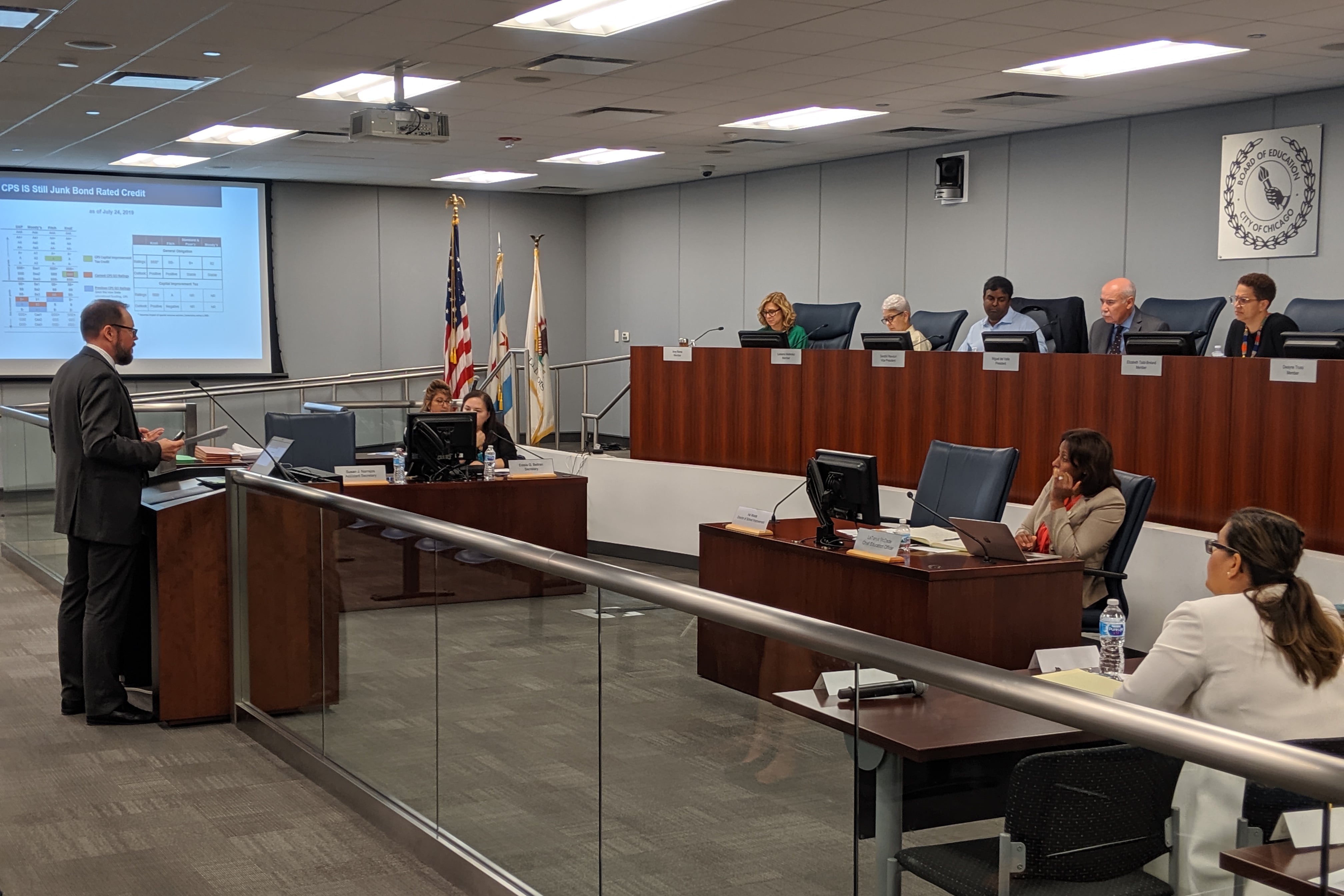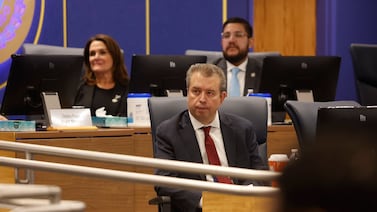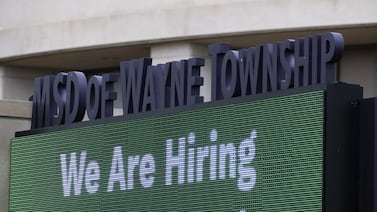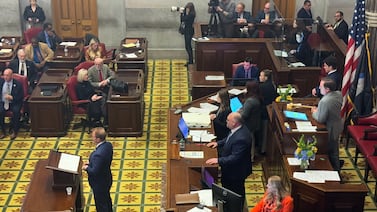Chicagoans will get to elect their school board members starting in 2024. But a report out this week suggests that may come with a cost.
The report, prepared by the district with help from a consulting firm, lists expenses currently picked up by other city agencies that Chicago Public Schools might have to take on as it transitions to an elected school board for the first time in the city’s history. These include water bills, rent, summer programs, and increased pension contributions, among other costs — possibly adding up to tens of millions of dollars a year.
That financial fallout might be relatively modest for a district with a $9.5 billion budget. But, the report says, it could add uncertainty to an already “fragile” financial outlook for the district.
The city does not have to cut off the school district as it shifts away from mayoral control. Some current school board members and the Chicago Teachers Union have criticized the city for already passing on some costs it has traditionally shouldered.
For example, in the past few years, CPS started paying for police officers stationed in schools, crossing guards, and a larger share of contribution toward a city-run pension fund that covers some district employees — all costs previously footed by the city. This year, the total price tag of these new expenses for the district add up to about $200 million.
The school district has had stable budgets in recent years, but after a major influx of federal COVID relief dollars runs out, the report estimates, the district could be $628 million in the red by 2026.
“CPS could find itself in a similar position by the end of this decade as it did in the middle of the last decade: having to rely upon one-time budget gimmicks and draws on fund balance to avoid significant cuts in educational services,” the report cautions.
The upcoming shift away from mayoral control would bring Chicago Public Schools more in line with other school districts, where district and city finances are completely separate.
In July 2021, Gov. J.B. Pritzker signed a bill that will phase in an elected school board with 21 members for Chicago Public Schools by 2027. In November 2024, Chicago residents will elect 10 members while the mayor will continue to appoint 11 members. In 2026, Chicagoans will be able to elect the remaining 10 seats and the president of the board.
Pritzker signed another piece of legislation in December 2021 that required the Chicago Board of Education to commission an independent financial review report assessing the district’s funding and detailing the financial agreements between the city of Chicago and Chicago Public Schools. That law specified that the report had to be sent to the Governor’s office, the Illinois board of education, Chicago board of education, the General Assembly, and the mayor’s office no later than Oct. 31, 2022.
Report tallies some hypothetical costs
The district’s ties with the city run deep after more than 30 years of mayoral control. The new report acknowledges that it likely doesn’t offer a complete list of the two entities’ financial ties.
One possible cost shift noted in the report is the city charging the school district to use water. It outlines that the city could technically start charging the school district roughly $12 million in annual water, sewer, and permit fees. Currently, these fees are waived for the city’s schools and other public and nonprofit entities, such as its community college system.
The city has also helped the district cover costs for some of its long-term debt, incurred to foot the bill for school construction and building projects. Those payments, bringing in about $142 million a year through a city tax levy, are slated to continue until 2029.
The district is already taking on some expenses the city has chipped in for historically. Chicago Public Schools has been paying a growing amount toward the Municipal Employees’ Annuity and Benefit Fund, a city-run pension program that covers district support staff and other employees. The city was handling those costs until recent years, though it did not fully cover them as it went along. This year, the district increased its contribution to $175 million, over objections from some school board members and the teachers union.
Last year, the district also took over from the city the cost of school resource officers and its crossing guard program, for which CPS budgeted $16.6 million this year.
The report notes that some of the uncertainty around these entanglements complicates the district’s broader financial outlook.
The district — serving significantly higher than average portions of students who have disabilities, are homeless, or learning English — now receives about $1 billion less from the state than what is deemed “adequate” funding based on Illinois’ own math. It also diverts hundreds of thousands of dollars in state funding to cover debt payments for past school construction and other borrowing.
The largest source of the district’s funding is local property tax revenue, but it’s somewhat limited in hiking those taxes.
Advocates call cost-shifting retaliation
In a statement about the report, the district said it will continue to advocate with state legislators and officials to fully fund the district and address the fiscal challenges that come with the district’s unique position: It is the only district in the state that covers its own teacher pension costs.
“We will work with the State to develop a thoughtful process of disentangling CPS from its historical relationships with the City and other public agencies in Chicago, as well as a process to wind down the extraordinary pandemic-era federal support to avoid a threat to structural budgetary balance,” the statement said.
Chicago Public Schools officials have sounded alarms about the district’s long-term financial picture in recent months, saying they don’t want an elected school board to inherit money troubles. CEO Pedro Martinez has lamented that, unlike other Illinois districts, Chicago Public Schools is limited in asking residents to raise their own taxes to fund the district’s operations and building costs.
Sendhil Revuluri, the Vice President of the board, said the report helps the board and the public better understand the district’s fiscal outlook, which includes projected budget deficits.
“As both a CPS parent and a board member, it’s important to me that we keep these facts in mind as we make decisions — sometimes tough ones — to ensure all our students have excellent educational experiences and we keep improving their learning outcomes,” he said in an emailed statement.
Chicago advocates pushed for an elected school board after years of being dissatisfied with a mayor-controlled school board. That advocacy intensified after former Mayor Rahm Emanuel’s administration closed more than 50 schools across the city’s South and West sides, largely affecting families of color.
As a candidate, Mayor Lori Lightfoot supported an elected school board. But after taking office, Lightfoot came to strongly oppose that shift, arguing that special interests would dominate races for board seats.
During the 2021 spring legislative session, she teamed up with Sen. Kim Lightford, D-Maywood, to propose a hybrid school board bill. The bill didn’t move far, but the mayor made it clear she strongly opposed the 21-person elected school board. Now, some advocates who pushed for the bill are concerned that the city will try to undermine the school board.
Pavlyn Jankov, a researcher for the Chicago Teachers Union, said the city is retaliating against the district for transitioning into an elected school board by shoving these costs onto CPS.
School districts and cities “are supposed to be funding their schools and working together through governmental agreements to raise revenue for their constituents,” said Jankov. “Schools in Chicago Public Schools serve the same residents and have the same borders as the city.”
The report was prepared by the district with help from Columbia Capital Management, a financial consulting firm that works with the city, district, and other government agencies in Illinois.
The state board of education is required to review the report and provide recommendations to the General Assembly by July 1, 2023 on the district’s ability to operate with its own budget.
Rep. Delia Ramirez, D-Chicago, who sponsored the elected school board bill that passed, said the House is waiting to review and discuss the report by CPS.
“The goal here remains to ensure that every student has access to high quality public education, and our review over the coming months will be focused on that,” said Ramirez.
Correction: Nov. 4, 2022: This article has been updated to reflect that Chicagoans will vote for 10 members of the elected school board and the board president in November 2026, not all 21 seats.
Mila Koumpilova is Chalkbeat Chicago’s senior reporter covering Chicago Public Schools. Contact Mila at mkoumpilova@chalkbeat.org.
Samantha Smylie is the state education reporter for Chalkbeat Chicago, covering school districts across the state, legislation, special education, and the state board of education. Contact Samantha at ssmylie@chalkbeat.org.







